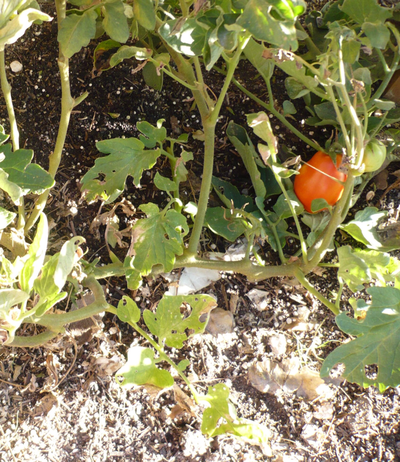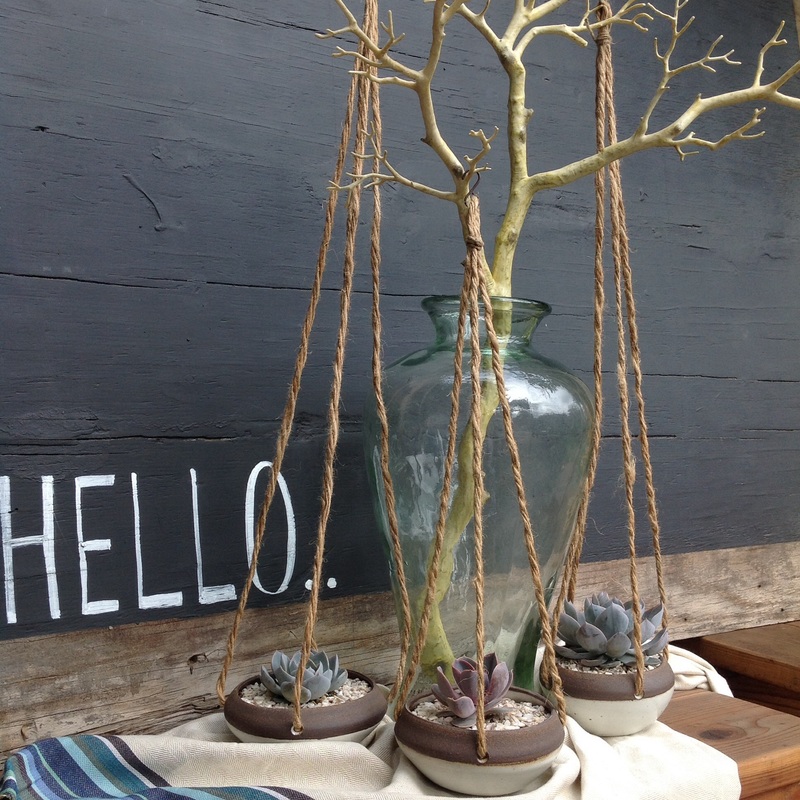|
So many tomatoes coming in from the garden, that I thought I would share one of my favorite recipes Baked heirloom tomatoes stuffed with a quinoa-spinach pine nut mixture and topped with Parmesan cheese Ingredients
Instructions
0 Comments
I thought it would be helpful to me and others if I started to document what I teach, grow and do in the garden. These are mini segments of my days at various schools and home gardens in the Los Angeles and Long Beach area. Hope you find them helpful!
We are still harvesting great big beautiful eggplant at the Aspire garden in the city of Bell Gardens. The students have been so interested to find out what something so lovely could possibly taste like. I explained that eggplant is delicious when roasted and sprinkled with fresh chopped herbs drizzled with olive oil. Luckily, the cafeteria is super close to the garden, and I was able to use their oven for the eggplant roasting! The children loved it and so did I actually! Especially the little extra toasted pieces...the flavor is addicting! We made some room in the garden by removing bolted lettuce and arugula. I didn't take it all because the bees are loving the early flowers so until I can replace them, they will stay. I let some of the arugula go to seed and collected it then use it to continue to seed it around the garden all year round. Woodlawn Elementary School-Bell Garden, California
A new rotation brought some new smiling faces to the garden today! Transitional kindergarten and first grade learned the rules of the garden. Many of the garden’s rules are similar to those in the classroom. We talked about how the garden is like an outdoor classroom and as the children walked around we pointed out some differences as well. The children were super surprised to find tomatoes growing in the garden. They compared the tomato plants to plants that have tendrils to help climb and support themselves and also tasted sweet tomatoes and compared them to Swiss chard leaves. The 5th graders in this new rotation are not new to the garden. I told the kids I will be challenging their thinking about the importance of growing food and food systems. Today after making observations in the garden, and asking a zillion questions, we sat down and wrote a super question about something they learned in the garden. The kids then worked in pairs answering their questions and presenting them to the class and had a “fresh from the garden” snack for all their hard work! ~ alex It's been a long time since my last entry. Life does get busy, doesn't it? I thought I would post one of my favorite recipes. It's one of those you know by heart and has special memories attached to it. For me, this recipe reminds me of my honeymoon in Bali. My husband and I ate hot, creamy Jook porridge every morning, topped with fixings of chopped ginger, parsley, chives a squeeze of lime and a bit of soy sauce. Yum! There are many variations to this recipe and I encourage you to make this your own, with your favorite herbs and spices. Here's my take on this great comfort food. 2 fresh turkey backs (2lbs)
8 cups water 2 tsp salt bay leaf 1 cup jasmine rice 1 can coconut milk 2 kafir lime leaves 1/2 inch piece peeled fresh ginger 1 can straw mushrooms (optional) chopped green onion Minced fresh parsley Julienne cut peeled ginger lime soy sauce to taste Preparation Combine first 4 ingredients in a crockpot, set to high and cook for 5 hours or until meat is falling off the bone. I typically do this step overnight( you can use a Dutch oven, bring to a boil then cover, reduce heat, and cook 1 1/2 hours) Skim scum off broth. Remove meat and when cooled remove meat from bones, chop meat and stir back into soup. Add next 5 ingredients and continue cooking for 2 hours or until soup is thick and creamy ( if using Dutch oven, bring back to a boil, cover and reduce heat for 1 hour) Serve hot with the next 4 ingredient. As organic edible gardeners, we all struggle with pest control. But when the pests in your garden are furry little rodents eating all your hard earned organic vegetables, it's time to get serious about rat control. Urban gardens are very hospitable to rodents because they provide food, water and shelter. If you are starting a vegetable garden in an urban location that has fruit trees, it is most likely already a home for a rodent family. Here is my quick list to deter and reduce rats in your garden:
A Rat Reduction Plan
If all this fails, and it might, build this little beauty; I love fresh spring rolls...people say the secret is in the sauce, but I just love how you can fill them with all types of seasonal veggies, and wrap them like a salad to-go! The version I typically do is great for summer harvest because you'll have plenty of crispy cucumbers, carrots and any greens will do. A little avocado works nicely too... :)
To make sauce: mix all sauce ingredients together. Stores in refrigerator for a week.
 I grew amaranth this year for the first time and I was very pleased with the results. Before planting, I read about how nutritious amaranth is not only in its protein content but in the amount of calcium that the leaves contain. Amaranth is a warm season crop that requires full sun. Germination occurs when soil temperatures are between 65° and 75°F. For us here in the Los Angeles county area this means starting seeds early fall and harvesting as I did in February. Another crop can be sown in February and harvested in the beginning of summer. I grew Amarantus Retroflexus, which has green foliage and green seed heads. Other varieties have more dramatic leaf color and brilliant burgundy and red seed heads. I was amazed at how many plants I was able to grow in a 4 x 4 raised bed. I sewed 20 seeds, (October 2015) covered them lightly with loose soil and kept them moist. They germinated in 10 to 12 days and grew very quickly. In about 75 days (mid December)the plants had grown over 5 feet tall and definitely needed support although the stems were quite thick. Throughout this time, I harvested the young leafy greens for smoothies and salads making sure to leave plenty of leaves on the plant to keep it healthy. By mid February, the plants and seed heads had begun to turn brown. I waited for a sunny dry day to cut them at the base and let them dry a bit before harvesting the seed. To harvest the seed, I laid a towel down and with gloved hands rub the seed heads over the towel. I shook the towel a bit and removed most of the big seed head pieces with my hands. Amaranth has no hull, so I just blew off any bits of debris as I shook the towel. I did this several times, then placed all the seeds in a bowl and continued shaking and blowing. My yield was about 1/2 a cup. Not much, but don't forget I harvested leafy greens all winter and in a 4x4 bed! Finally, I sprinkled the remaining debris and seeds over a freshly prepared raised bed, this time I will grow triple the amount!
If you are in the Los Angeles area, try growing some now as a backdrop to your summer crop or in a pot in a sunny location. I love how these hanging pots turned out!
The photo shoot was a bit unnerving after a repeat photo bomb from my frisky feline... Rock pots by Hippytoes....so cute! Caution, made for succulents only, or risk the chance of plant death by dehydration. |


























 RSS Feed
RSS Feed
